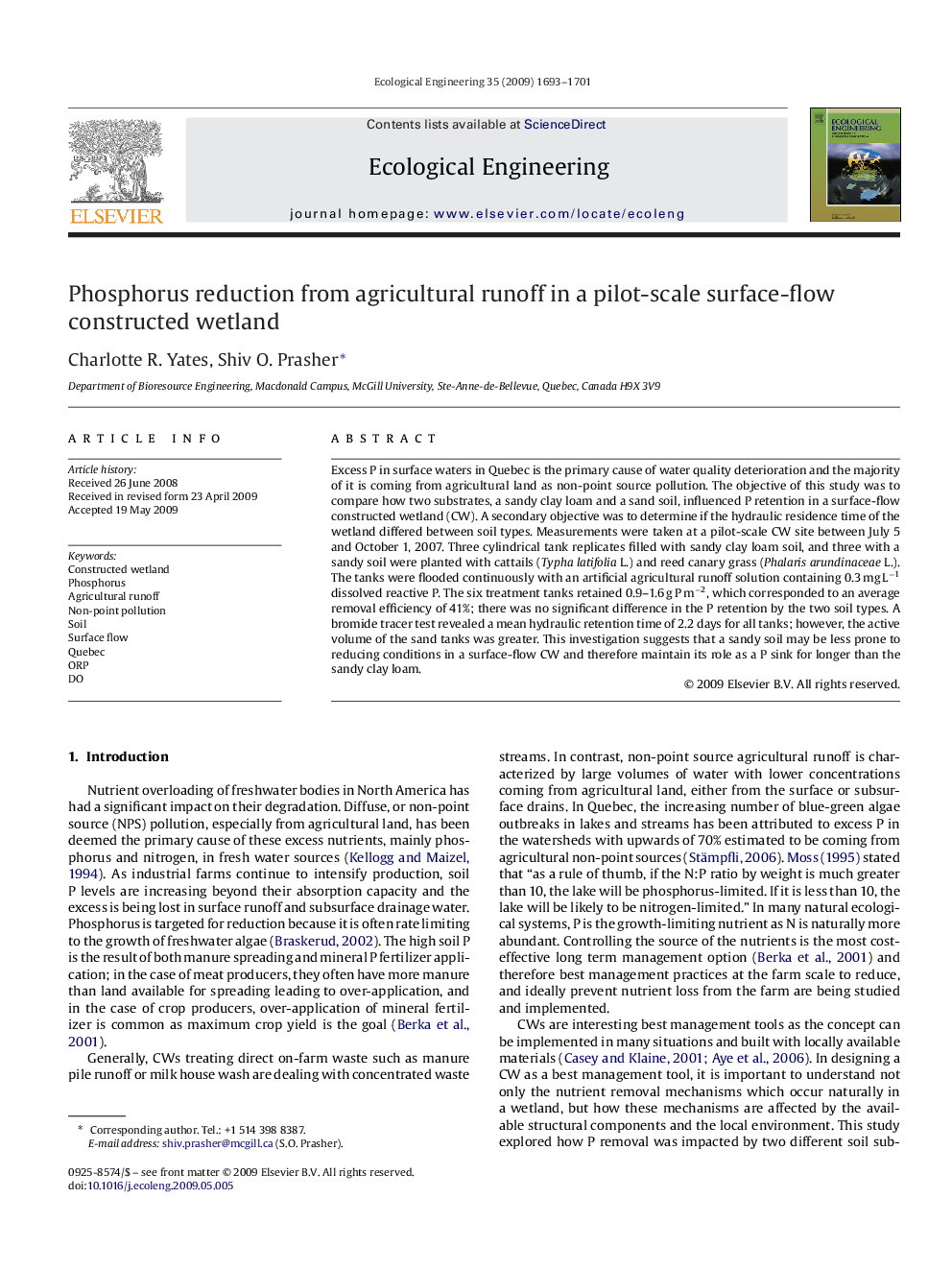| Article ID | Journal | Published Year | Pages | File Type |
|---|---|---|---|---|
| 4390409 | Ecological Engineering | 2009 | 9 Pages |
Excess P in surface waters in Quebec is the primary cause of water quality deterioration and the majority of it is coming from agricultural land as non-point source pollution. The objective of this study was to compare how two substrates, a sandy clay loam and a sand soil, influenced P retention in a surface-flow constructed wetland (CW). A secondary objective was to determine if the hydraulic residence time of the wetland differed between soil types. Measurements were taken at a pilot-scale CW site between July 5 and October 1, 2007. Three cylindrical tank replicates filled with sandy clay loam soil, and three with a sandy soil were planted with cattails (Typha latifolia L.) and reed canary grass (Phalaris arundinaceae L.). The tanks were flooded continuously with an artificial agricultural runoff solution containing 0.3 mg L−1 dissolved reactive P. The six treatment tanks retained 0.9–1.6 g P m−2, which corresponded to an average removal efficiency of 41%; there was no significant difference in the P retention by the two soil types. A bromide tracer test revealed a mean hydraulic retention time of 2.2 days for all tanks; however, the active volume of the sand tanks was greater. This investigation suggests that a sandy soil may be less prone to reducing conditions in a surface-flow CW and therefore maintain its role as a P sink for longer than the sandy clay loam.
